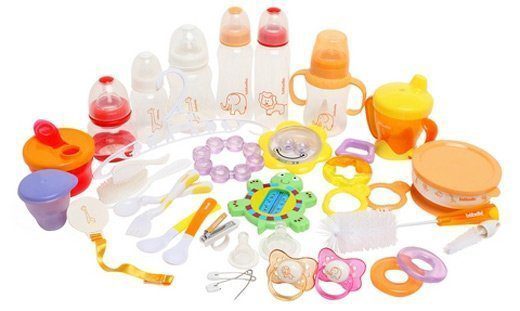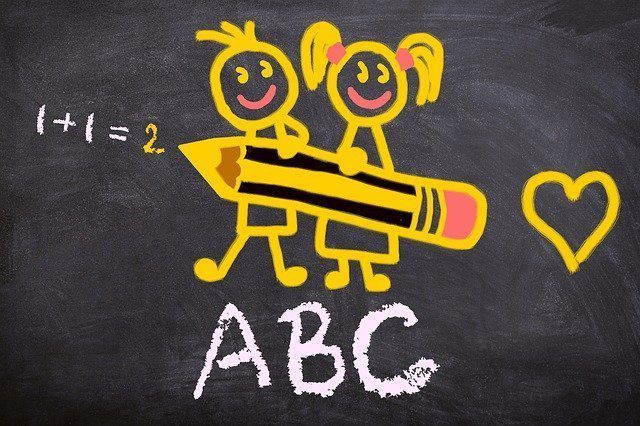Giving the baby their first bath is often seen as quite a challenge for new parents. It is normal since you do not know how the baby will react to it and it also takes time to find the best time of the day and method of bathing before you feel comfortable and turn it into a routine.
There are many questions associated with the first bath and actually, there are various answers to it. Starting from how often it is normal to bathe a newborn and going through the best soap and shampoo that you can use, it seems a bit like a riddle that you have to solve.
Being a new parent is not easy but it is one of the best times of your life, so you need to simply relax and enjoy everything “first” that happens to you. In the guide below, we have tried to summarize some of the most important tips related to giving your little one their first bath. You can find answers to many of your questions along with a list of the most common dangers and how to avoid them.
Choose the right time for a first bath
One of the first questions is when shall I give my baby their first bath. If you google the question, you will come up with a great variety of answers. There are different practices adopted in different countries along with valid medical recommendations for most of them.
Hence, the answer is that you need to find the right time for the first real bath of your baby. Some parents start bathing their babies straight after coming home from the hospital, while others prefer the umbilical cord stump to have fallen off prior to giving the newborn a real bath. Many parents start with a sponge bath for the first few days and even weeks and then continue to a baby bath.
It is important that you feel prepared for it and that your baby feels comfortable with bathing as well. If the baby prefers the sponge bath you can gradually introduce bathing in water, making the transition smooth and pleasant.
Types of bathing for newborns
There are several ways to bathe a newborn baby. Here are the most common ones that you can choose from:
- A sponge bath. You use a washcloth or sponge to clean the body and face of your newborn without actually sinking them in water. You need a soft washcloth or sponge and a vessel with water in order to clean your baby. Use lukewarm water and simply dampen the washcloth or sponge in it and then gently rub the different parts of your baby. The baby should lay on a flat surface while cleaning them. Once you undress them, put them in a soft towel and unwrap only those parts that you are actually washing. Thus, you will keep the baby warm. Start from the neck and proceed down. You should wash their face with a soft washcloth as well going carefully around the mouth, under the nose, and behind the ears.
- Topping and tailing. This method is similar to the sponge bath but in this case, you wash only their face and bottom. You can wash the baby’s face using cotton wool balls as well. Use a new piece for each wipe in order to avoid spreading infections. Simply dip the cotton wool ball into water, squeeze it and wipe first each eye starting from the inner corner outwards. Then wipe their mouth, nose, ears, and neck. Once you are done with the face, wipe clean their bottom and change the diaper.
- Wash your baby in the main bath. Very carefully fill in the bathtub with little lukewarm water and follow the steps as described below in order to wash your baby.
- Wash your baby in the sink. You need to firmly hold your baby with one hand and gently wash it under the running water in the sink. Be careful that no water gets in their ears. Quite often, fathers are better at this type of bathing as their hands are bigger and provide firmer support for the baby.
- Buy a special baby bath. There is a great variety of designs that you can choose from. Opt for the one that is comfy for the baby and easy for you to use. Follow the same routine as if washing in the main bathtub.
- Have the baby with you in the bathtub. You shall do this only if you have a partner to assist you as otherwise, it is a bit dangerous not to slip while cradling your newborn. You need to get in the tub first and then your partner places the baby either on your chest or on your legs facing you. You can gently splash warm water over the baby in order to wash them. Once ready, hand over the baby to your partner and then get out of the bathtub.
You can choose the type that your baby loves most or you can combine them to create a variety of bathing experience.
How often to bathe a new born?
The frequency of the bath is also one of the most discussed issues. While your baby doesn’t actually need to be washed every day, it is still ok to do it if you feel that this is the right approach for you. Alternatively, you can give them a proper bath 2-3 times a week and keep their bottoms, hands, neck, and face by using a sponge bath in between the washes.
Establish a schedule
It is important to find the perfect time of the day for a bath and turn it into a habit. Kids love routine even from the moment they are born.
Some parents prefer to wash their babies a little before bedtime as the warm water soothes them and makes it easier for them to fall asleep. Others choose mornings or the early afternoon. The schedule depends entirely on you, your daily routine and the way the baby feels during bath time.
It is important not to take them to the bath right after they have eaten as it is not good for their tummies and the baby may spit all the food out.
Prepare all your supplies in advance
You need several things for a baby bath – a towel, a clean diaper, a new set of clothes, a diaper rash cream or powder, a soft washcloth, baby soap and/or shampoo.
Place all the supplies within an arm’s reach so that you can easily get them. All the bottles should be open in order to save you the struggle of fighting with a tight cap with one hand while supporting your baby with the other.
All the bath supplies should be with you in the bath – the towel, soap, washcloth/sponge and shampoo. The rest should be ready at the place where you will dress the baby.
Skip the soap
Babies’ skin is very gentle and gets dry much faster. Even washing them too often can lead to dry skin. Therefore, it is advisable to skip the soap whenever possible. You also need to use special baby soap that contains no perfume or dyes.
Go tear-free
Babies and kids, in general, are quite sensitive to washing their heads and hair. Choose baby shampoos that cause no tears and are gentle and easy to wash. Also, it is a good idea to leave hair washing for the last thing in the bath. There are several reasons for that:
- Babies get cold quickly and staying with wet hair is not the best advice
- If you wash their hair first, the baby will sit in suds water for the rest of the bath which may cause additional dryness of the skin
- Many babies don’t like washing their heads and that will upset them. Bathing a crying baby is neither pleasant nor easy
Check the water
Always make sure that the water you are using is the right temperature suitable for a baby, no matter which washing method you have chosen. The water should not exceed 120 degrees Fahrenheit. You can use a thermometer to measure it or you can simply use your elbow to check if the water is ok. Your elbow is more sensitive and the water should feel pleasantly warm in order to be ok for a baby.
Note that what feels like nice warm water when you touch it with your hands can be scorching hot for the sensitive skin of a newborn.
Make sure the room is warm enough
While babies should not be raised under a very high temperature, make sure that the room in which you wash them and have them undressed and dressed should be quite warm. The warmer temperatures will not only prevent your baby from getting cold but also make them feel cozy when getting out of the warm water and may spare you a few tears as well.
Be quick in the bathroom
When washing the baby, make sure that you are quite quick. Babies should not stay too long in water so 5 to 10 minutes is the optimal time. If your kid enjoys the bath, you can opt for a bit longer and if they truly resist it, you need to be even faster.
If the baby looks really cold or cries too much, it is better to stop washing them and get them dressed.
Ask for a helping hand
Since washing such a tiny human being is often scary the first few times, it is a good idea to have a helping hand in the bath. Ask your partner to help you with bathing your kid. Thus, you can hold the baby with both your hands if need be, or you can ask your partner to bring something you have forgotten while you stay with the baby.
On the other hand, it is also a perfect bonding time with the little one, so why deprive one of the parents of that fun.
Dry the baby carefully
Once you are finished with the bathing ritual, it is important to dry the baby carefully. Use a soft towel and tap the baby gently rather than rubbing their skin. Make sure that all folds of skin are dried to avoid irritation or rush. If you decide to put on a body lotion, use one specifically made for babies. Rub it gently in the skin with soothing massage movements.
Common dangers to avoid during bath time
Fears associated with bath time are real as often quite unpredicted and unpleasant things can happen. In order to prevent them, we shall be aware of what might happen and try to avoid it.
- Danger of drowning. This is the greatest dangers of all and it does not depend on how much water you are using. The rule is: never leave your baby alone in the bath or under the supervision of another kid. If you need to urgently answer a call, open the door or you have forgotten something, wrap the baby in a towel and take them with you.
- Bath seat danger. While bath seats and rings are designed to help us bathe our kids, they are not suitable for babies under the age of one. The seat can easily tip over and your baby will be submerged face down in the water.
- Danger of scorching your kid. Forgetting to properly check the warmth of the water may lead to overheating or scorching your kid. Once the baby is already active (several months old), make sure that they have no access to the hot water tap as they may accidentally turn it on.
- Danger of slipping. It is good to have no-slip strips on the bottom of your bathtub so that your baby or toddler doesn’t slip while bathing. Once the kid starts walking and tries to step out of the bathtub, make sure to have non-slip mats on the floor as well.
- Keeping bath toys, washcloths and sponges too long in water can pose a danger to your kids as well. An infectious bacterium called Pseudomonas can grow inside toys or on the surface of sponges if they stay wet too long. It is necessary to have all the water out of toys and have them dry properly once you are done using them. Sponges and washcloths should be hung to dry and replaced quite often.
Bath time is important for babies and kids. It is also a great time for bonding and playing with your baby. Simply make sure that you follow the tips above and try to avoid the most common dangers, and soon you will both enjoy the time spent in the bathroom. As kids grow, they love to have toys and decoration in the bathroom, so you can have a look at our suggestions in our online shop.





































